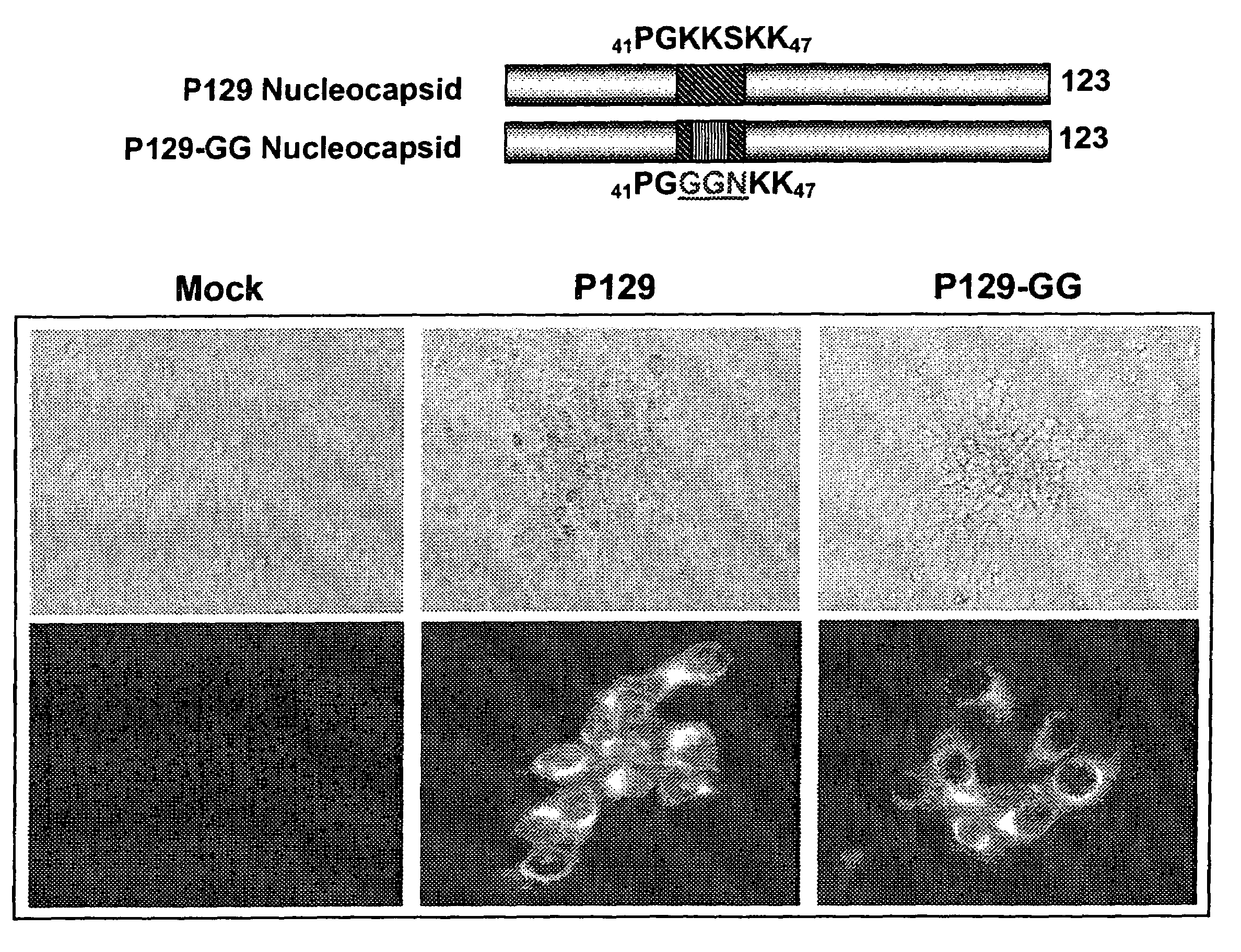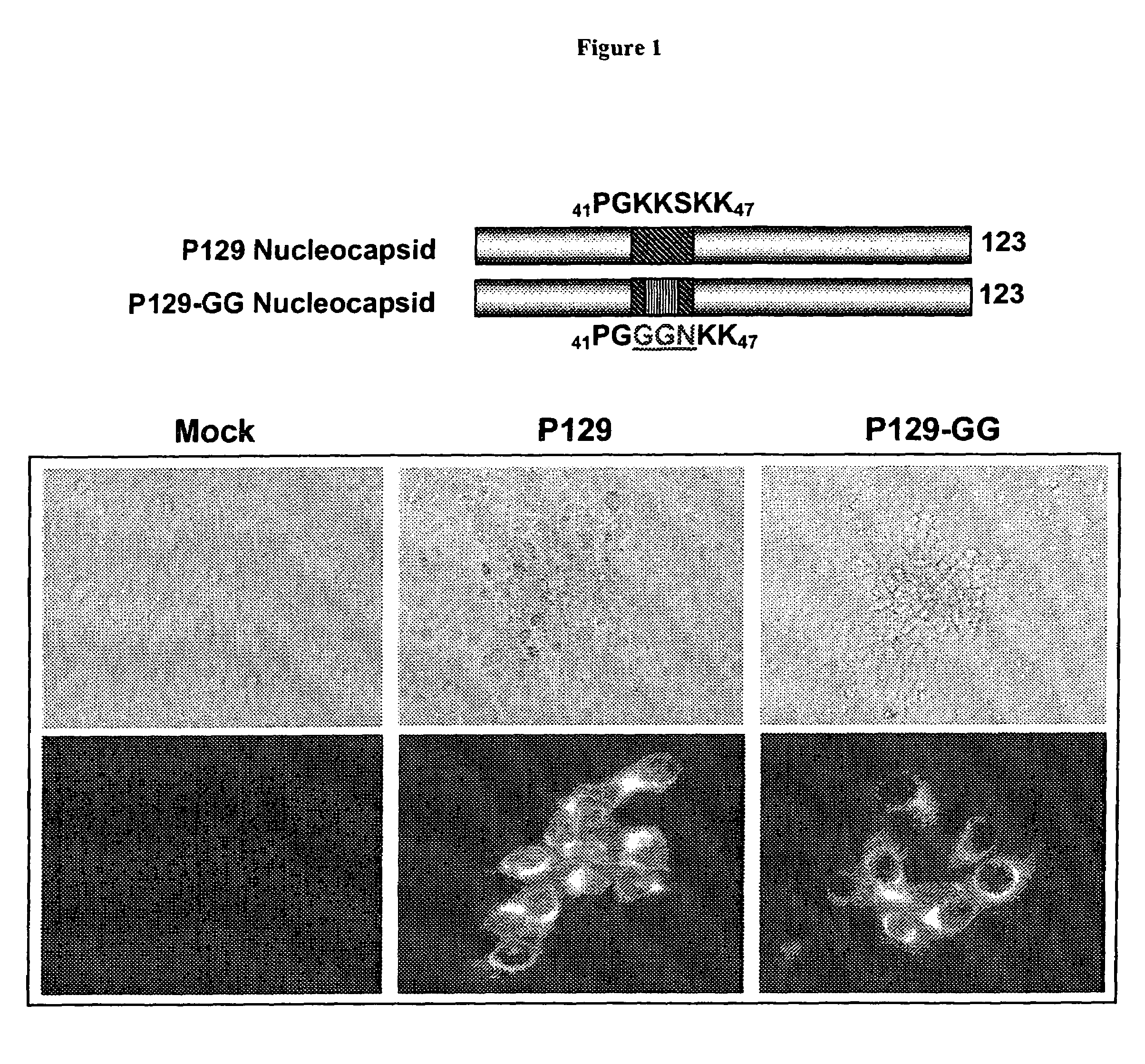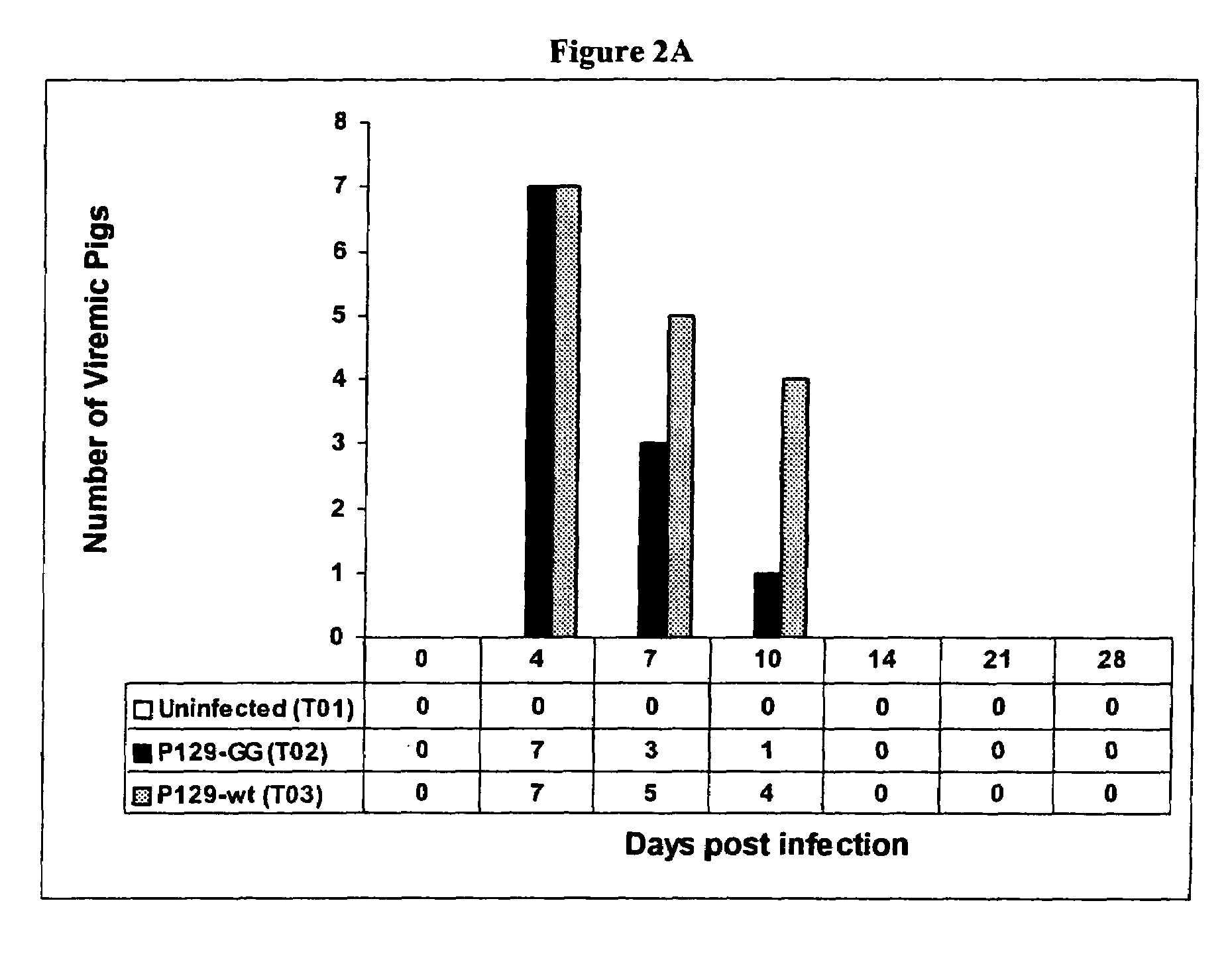N protein mutants of porcine reproductive and respiratory syndrome virus
a technology of porcine reproductive and respiratory syndrome and n protein, which is applied in the field of genetically modified prrs virus and polynucleotides, can solve the problems that vaccines can lose some ability to protect against virulent field killed vaccines have been criticized for failing to induce robust immunity against heterologous strains of prrs virus, etc., to achieve the effect of restoring a functional nls motif, minimizing
- Summary
- Abstract
- Description
- Claims
- Application Information
AI Technical Summary
Benefits of technology
Problems solved by technology
Method used
Image
Examples
example 1
Construction of Shuttle Plasmid pTB-Shuttle-PRRSV-3997
[0085]A shuttle plasmid was constructed in order to facilitate the introduction of specific modifications to a full-length PRRS virus genomic cDNA clone. A 3,997 bp fragment, representing the extreme 3′ end of the viral genome (nucleotide positions 11,504 to 15,416, including a 21 residue polyadenosine tail) and 84 bp of downstream vector sequences, was PCR-amplified. The PCR reaction included 5 ng of pCMV-S-P129 plasmid DNA (U.S. Pat. No. 6,500,662 B1), 300 ng of forward primer P-shuttle-Fwd (5′-ACTCAGTCTAAGTGCTGGAAAGTTATG-3′) (SEQ ID NO: 8): positions 11,504 to 11,530), 300 ng of reverse primer P-shuttle-Rev primers (5′-ATCTTATCATGTCTGGATCCCCGCGGC-3′) (SEQ ID NO: 9): positions 15,500 to 15,475), 1 mM each of dCTP, dGTP, dATP, and dTTP, 1×PCR buffer [10 mM KCl, 10 mM (NH4)2SO4, 20 mM Tris-HCl (pH 8.8), 2 mM MgSO4, 0.1% Triton X-100], and 2.5 U of Pfu DNA polymerase (Stratagene) using the GeneAmp PCR system 2400 (Perkin Elmer). T...
example 2
Modification of the NLS-2 Sequence to Generate P129-GG Virus
[0086]PCR-based site-directed mutagenesis was used to modify the nuclear localization signal 2(NLS-2) motif located at amino acid positions 41 to 47 of the nucleocapsid (N) protein. Among North American genotype PRRS viruses, this NLS motif is generally PGKKNKK (as in the prototype isolate VR-2332 or the Canadian isolate PA-8), or a derivative thereof, such as PGKKSKK (found in isolates P129 and 93-47324). The presence of multiple positively charged lysine (K) or arginine (R) residues is believed to be important for a fully functional NLS signal. The lysine residues at positions 43 and 44 of N (nucleotide positions 14,999-15,004 of the P129 genome) were replaced by glycine residues using the shuttle plasmid and the mutagenic primer pair KK43 / 44GG-Fwd (5′-GGCAAGGGACCGGGAGGGGGAAATAAGAAGAAAAAC-3′) (SEQ ID NO: 10)—: genome positions 14,984 to 15,019) and KK43 / 44GG-Rev (5′-GTTTTTCTTCTTATTTCCCCCTCCCGGTCCCTTGCC-3′) (SEQ ID NO: 11)...
example 3
Infection of Pigs with P129-GG Virus and Parental P129 Virus (Demonstration that the P129-GG Virus is Attenuated)
[0089]Twenty-one healthy, crossbred pigs without a history of disease caused by or vaccination against PRRSV and Mycoplasma hyopneumoniae were randomly assigned to 3 treatment groups of 7 pigs each. At approximately 6 weeks of age, T01 pigs received a placebo while T02 and T03 pigs received an intranasal challenge with 2.0 ml of virus stock diluted to 2.5×104 pfu / ml (5.0×104 pfu / dose) of the genetically modified P129-GG virus (generated from plasmid pCMV-S—P129-GG) or parental P129 PRRS virus (generated from plasmid pCMV-S—P129), respectively. All pigs were observed daily for clinical signs including general condition, depression, loss of appetite, sneezing, coughing, and respiratory distress. Rectal temperatures and body weights were recorded. Blood samples were taken on Days 0, 4, 7, 10, 14, 21, and 28 for PRRSV isolation and serology. Necropsies were performed on Days ...
PUM
| Property | Measurement | Unit |
|---|---|---|
| length of time | aaaaa | aaaaa |
| pH | aaaaa | aaaaa |
| volume | aaaaa | aaaaa |
Abstract
Description
Claims
Application Information
 Login to View More
Login to View More - R&D
- Intellectual Property
- Life Sciences
- Materials
- Tech Scout
- Unparalleled Data Quality
- Higher Quality Content
- 60% Fewer Hallucinations
Browse by: Latest US Patents, China's latest patents, Technical Efficacy Thesaurus, Application Domain, Technology Topic, Popular Technical Reports.
© 2025 PatSnap. All rights reserved.Legal|Privacy policy|Modern Slavery Act Transparency Statement|Sitemap|About US| Contact US: help@patsnap.com



